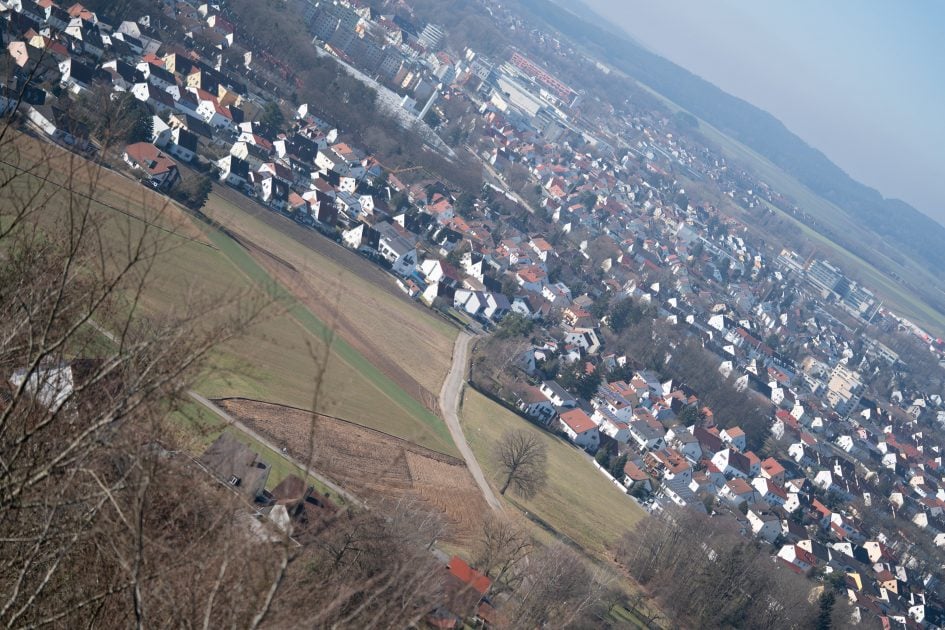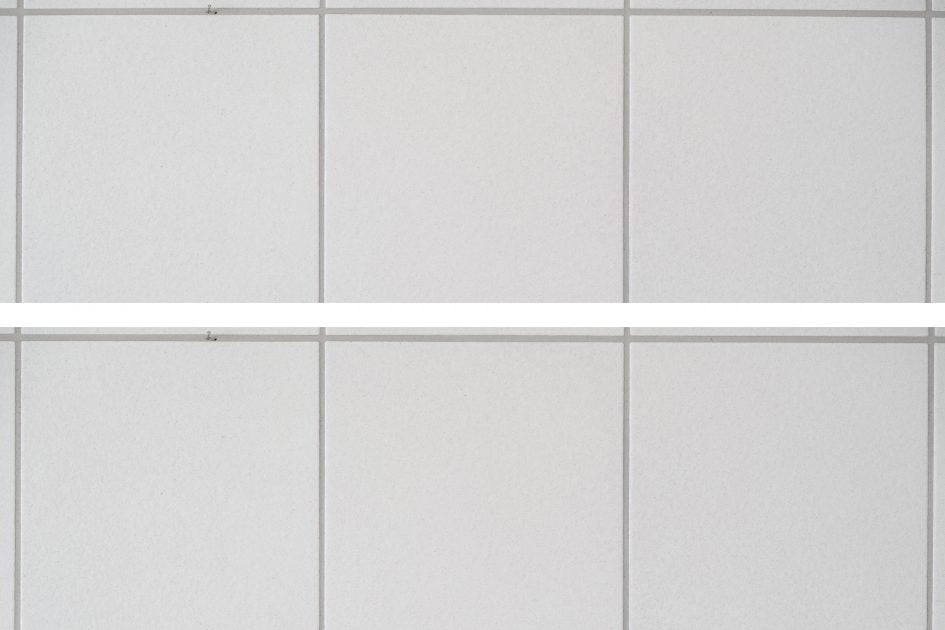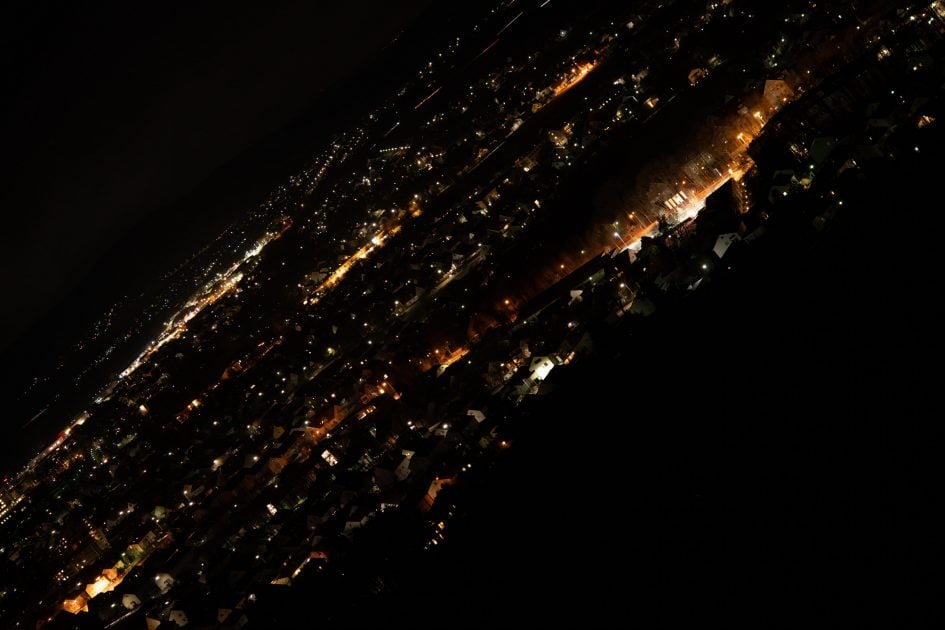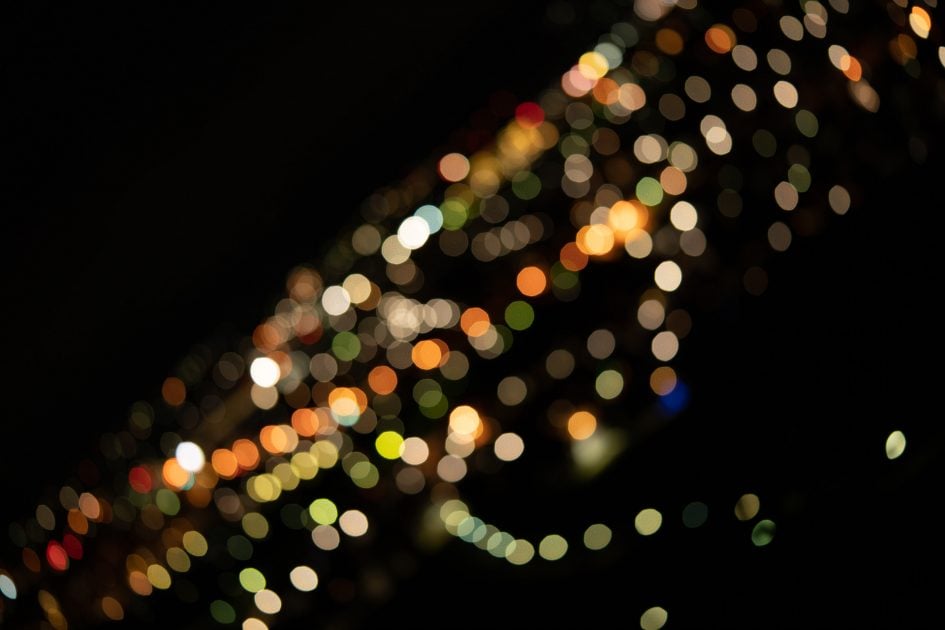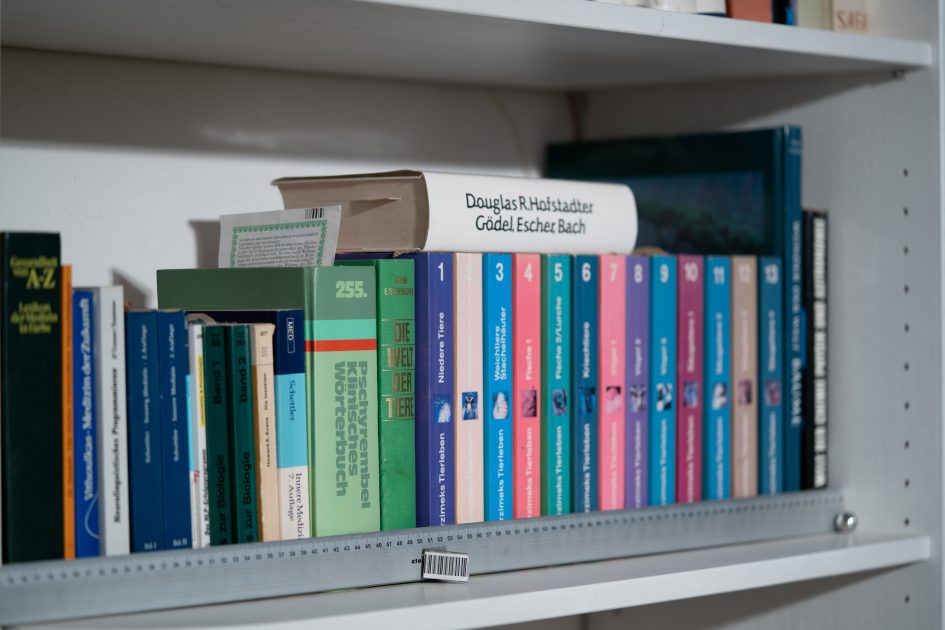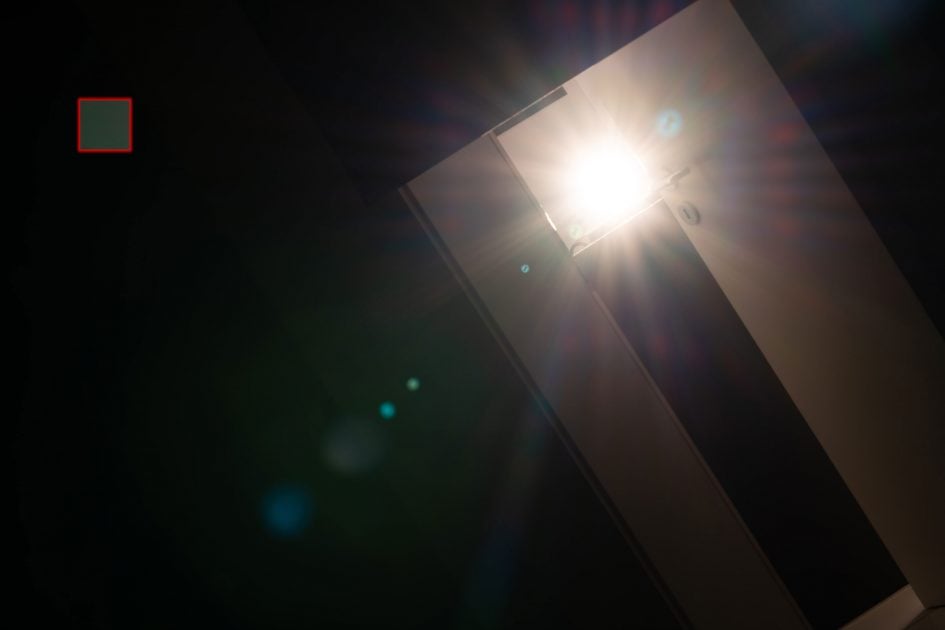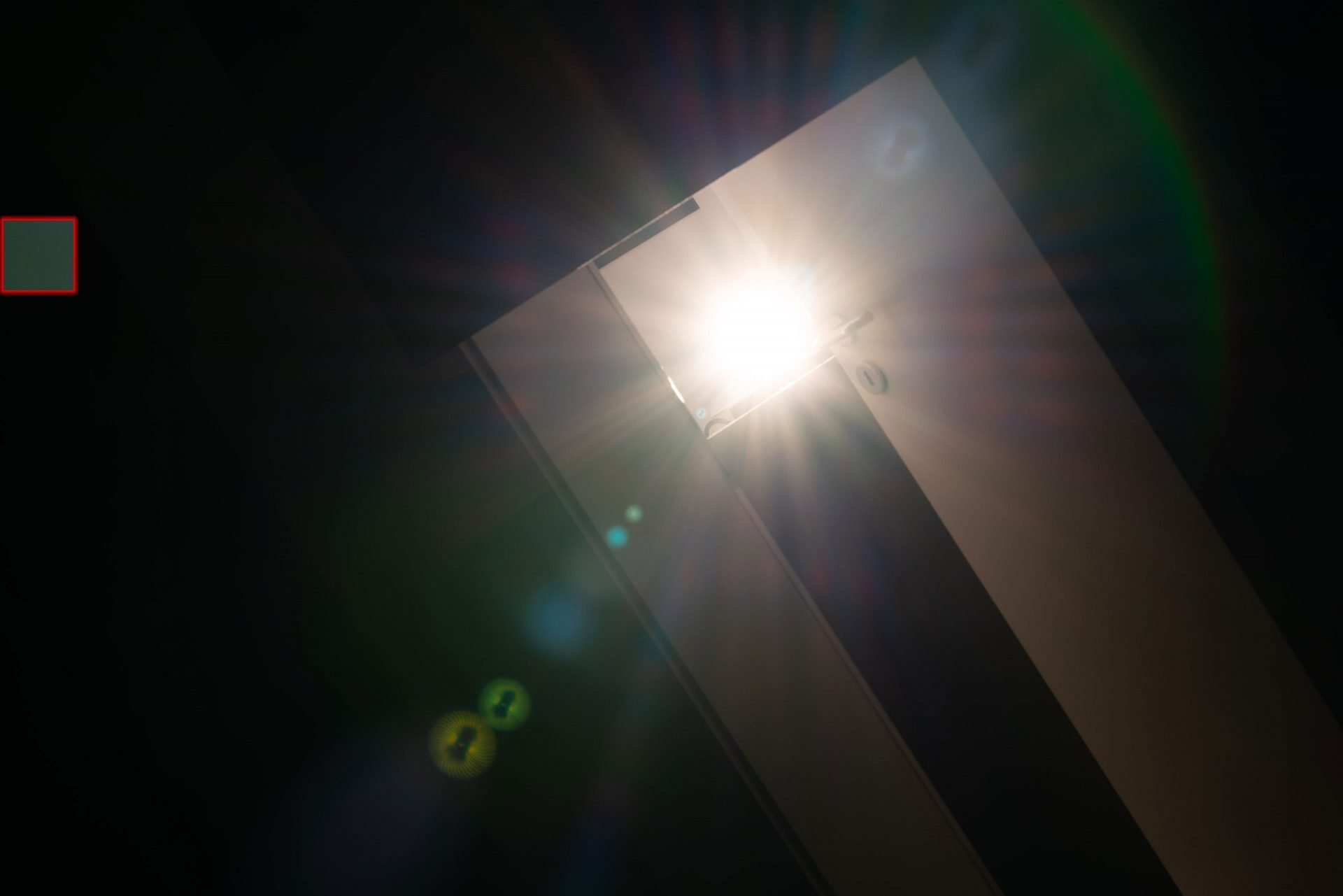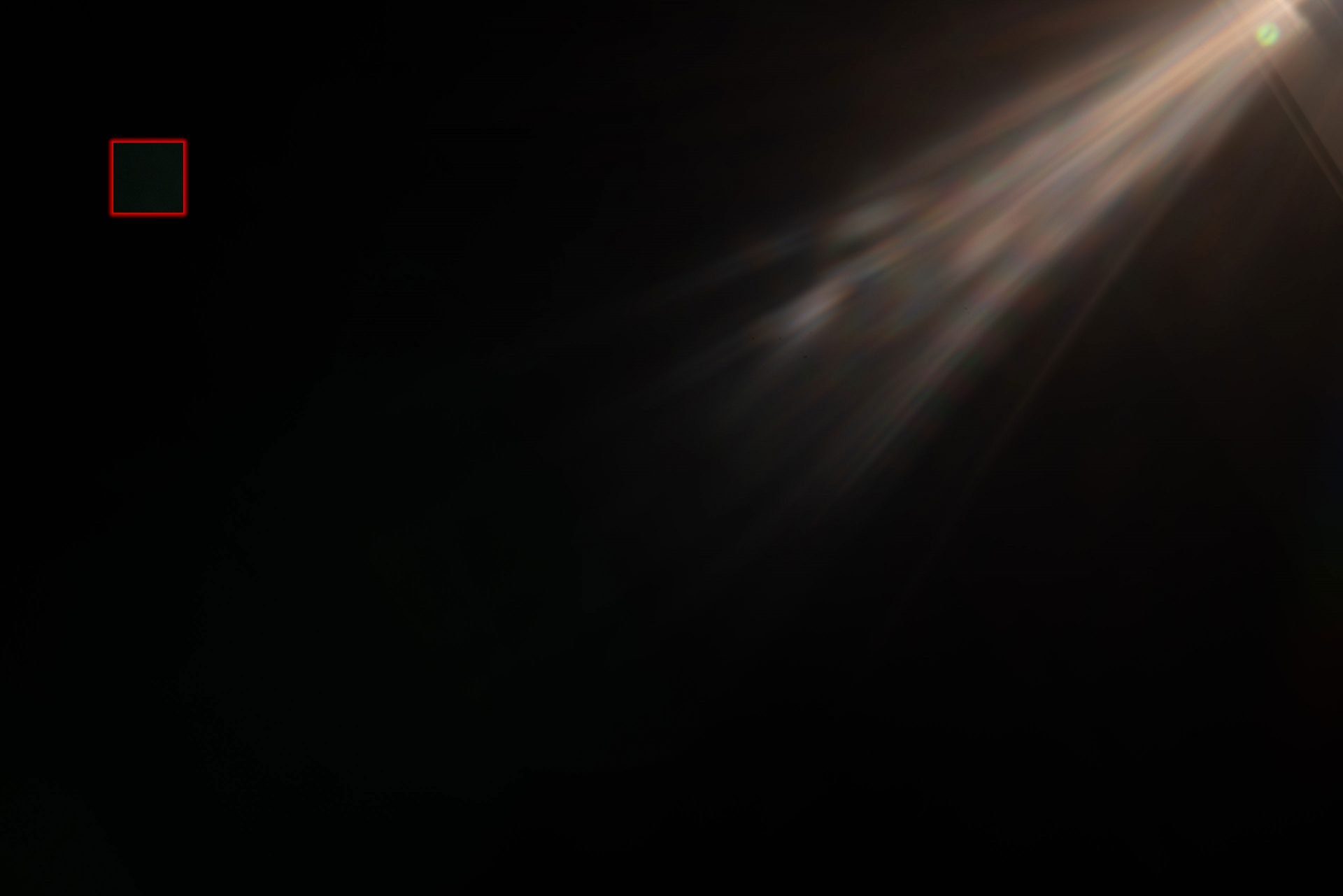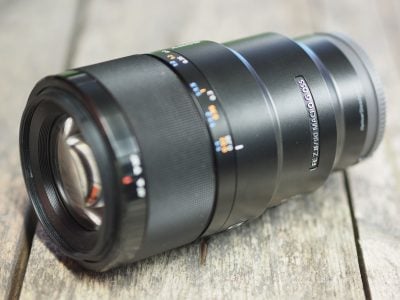Sony FE 90mm f2.8 Macro review
-
-
Written by Thomas
Quality
Testing: Longitudinal Chromatic Aberration and focus shift
Lenses with focal ratios of f2.8 or larger are often prone to longitudinal color aberrations (loCA, a.k.a. “axial color” or “bokeh CA”). These show up as magenta coloration in the foreground and greenish hues in the background and are not easily corrected in post-processing. The Sony FE 90mm f2.8 Macro G OSS shows a bit of loCA at normal distances but it does not become stronger when closing in. Focus shift is hardly discernible.
Sony FE 90mm f2.8 Macro G OSS longitudinal Chromatic Aberration (loCA)
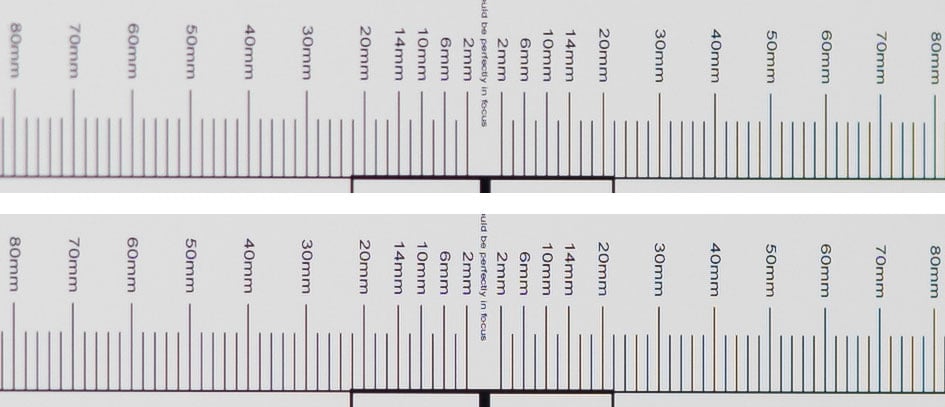
Above: Shot at 3.7m distance, 100% crops from top to bottom: f2.8, f4.0; left = foreground, right = background
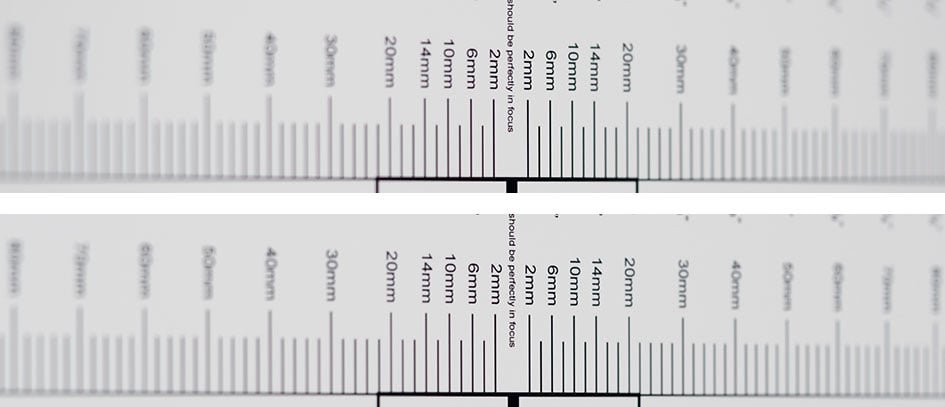
Above: Shot at 0.9m distance, 25% crops from top to bottom: f2.8, f4.0; left = foreground, right = background
The following shot of a crumpled aluminum foil shows loCA coloring specular highlights in the background an foreground but it is much less severe than on some other lenses I’ve tested:
Above: Sony FE 90mm f2.8 Macro G OSS at f2.8, 100% crop, click image for 4k version
Still, the Sigma 105mm f2.8 DG DN Macro Art is better in this respect (see here).
Sharpness and contrast
Let’s have a look at the theoretical performance of the Sony FE 90mm f2.8 Macro G OSS first and compare it to the Sigma 105mm f2.8 DG DN Macro Art:
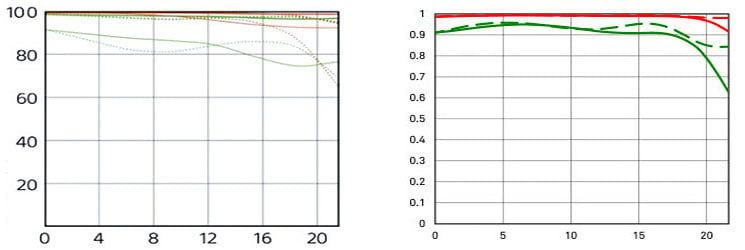
Above: Sony FE 90mm f2.8 Macro G OSS (left), Sigma 105mm f2.8 DG DN Macro Art (right)
These MTF charts show the computed lens-performance of lenses wide open without influence of diffraction at 10 line-pairs/mm (red) and 30 lp/mm (green) except for the charts of the Sony where the red lines show the performance at f8.0. Higher values are better (more contrast) and the closer the line-pairs are together the less astigmatism (= resolution depends on the orientation of the test-pattern) the lens has. The x-axis displays the distance from the optical axis (=center of the sensor) in mm. I’ll show you the real-life performance at 4 mm (center), 13 mm (APS-C-corner), and 20 mm (FF-corner) on a on a 42MP Sony A7R II camera.
From the charts resolution of the Sony FE 90mm f2.8 Macro G OSS trails the Sigma 105mm f2.8 DG DN Macro Art over most of the sensor.
Let’s see how this theoretical performance translates into real life results in the sharpness test based on Siemens-stars. Processing was done in Lightroom 10.1/CRAW 13.1 from RAW to Adobe Color profile with the built-in lens profile for Vignette Control and CA compensation applied. Noise-reduction is set to 0, sharpening to 50/0.5/36/10, with no extra tone, color, or saturation adjustment. White-balance was adjusted to a neutral white and I did some exposure compensation to make the brightness of all crops match. So you will not see light fall-off in the corners.
Sony FE 90mm f2.8 Macro G OSS compared; 100% crop from center, APS-C-corner, FF-corner

Above: Sony FE 90mm f2.8 Macro G OSS at f2.8

Above: Sigma 105mm f2.8 DG DN Macro Art at f2.8

Above: Sony FE 90mm f2.8 Macro G OSS at f4.0

Above: Sony FE 90mm f2.8 Macro G OSS at f5.6; also available at f8.0, f11
Performance of Sony’s FE 90mm f2.8 Macro G OSS in the APS-C image-circle is pretty good at f2.8 already but the lens needs stopping down to f4.0 to reach the level of acuity which the Sigma already produces at f2.8. The test also showed the Sony to have practically no field-curvature: all crops in a row are from the same shot.
Performance at long distances
The Siemens-star test-targets are shot at a distance of 45x focal length (i.e. at around 4m). But performance of lenses also depends on the shooting distance. Therefore I present another series of test-shots of a city around 1 km away. Processing was done in Lightroom 10.1/CRAW 13.1 from RAW to Adobe Color profile with the built-in lens profile compensating vignetting and CA. Noise-reduction is set to 0, sharpening to 50/0.5/36/10, with no extra tone, color, or saturation adjustment. I used manual focus at the largest aperture and did not change focus for other apertures. All shots were made at ISO 100.
The following image shows the complete scene wide open to give you an impression of the angle of view. Following the main image are 100% crops from the center, APS-C-corner, and FF-corner from the Sony FE 90mm f2.8 Macro G OSS compared to the Sigma 105mm f2.8 DG DN Macro Art at f2.8. The Sigma was shot another day but under comparable atmospheric conditions – which in both cases were not the clearest. As usual I have selected the diagonal that provided the better corner results as the Sony was quite a bit decentered.
You can access the large originals but please respect our copyright and only use those images for personal use.
Above: Sony FE 90mm f2.8 Macro G OSS at f2.8
Above: Sony FE 90mm f2.8 Macro G OSS at f2.8; 100% crops, click image for 4k version, here for large original
Above: Sigma 105mm f2.8 DG DN Macro Art at f2.8; 100% crops, click image for 4k version, here for large original

Above: Sony FE 90mm f2.8 Macro G OSS at f4.0

Above: Sony FE 90mm f2.8 Macro G OSS at f5.6; also available at f8.0, f11
The 100% crops of the Sony show a very good level of fine detail even wide open. Stopping down to f4.0 just improves overall contrast and acuity a bit. The Sigma looks similar in comparison.
Vignetting and distortions
To make it easier to see light fall-off in the corners of a full-frame sensor I’ve arranged a series of shots with the Sony FE 90mm f2.8 Macro G OSS at different apertures. All images were developed to the same brightness in the center.
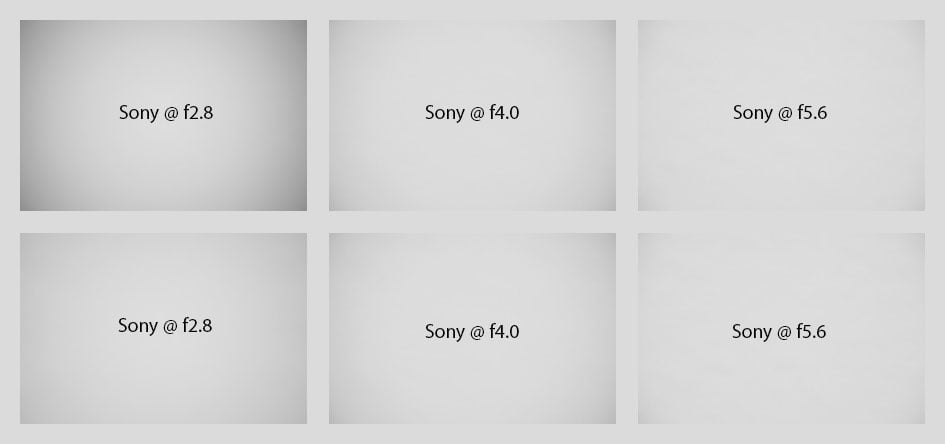
Above: Sony FE 90mm f2.8 Macro G OSS with shading compensation OFF (top), and shading compensation AUTO (bottom) at f2.8, f4.0, f5.6
The sample images above show that with the lens profile applied vignetting of the Sony is relatively mild. Automatic shading compensation lifts the extreme corners about 0.8 EV at f2.8. Adobe’s RAW converter automatically applies shading compensation as it was set in camera – but you cannot alter the setting in postprocessing.
Distortions are of a mild barrel type at 2m distance. The setting for distortion compensation in camera is currently ignored by Adobe’s RAW converter and treated as OFF but there is a lens profile for the lens in Lightroom 10.1 / CRAW 13.1. Activating Adobe’s lens profile also adds an additional degree of shading compensation. So make sure to dial it back to the desired level.
Distortions: Sony FE 90mm f2.8 Macro G OSS, as is (top) / with lens-profile (bottom)
Rendering of point-light sources at night-shots
Night-shots pose a different challenge for lenses as the contrast is even higher than under bright sun and point-light sources can reveal some weaknesses such as coma, haloing and colour-aberrations that do not show up as prominently in other test-shots. The 100% crops below the main image show the effect of coma in the FF-corner of the Sony FE 90mm f2.8 Macro G OSS at different apertures compared to other lenses:
Above: Sony FE 90mm f2.8 Macro G OSS at f2.8; click image for 4k version, here for large original

Above: Sony FE 90mm f2.8 Macro G OSS; 100% crops from the FF-corner at f2.8 (left), f4.0 (middle), f5.6 (right)
The Sony FE 90mm f2.8 Macro G OSS produces very little coma even wide open.
Bokeh quality
This test is for the rendering of point-light sources in an out-of-focus background. The circle of confusion that is produced by this test is pretty indicative of Bokeh performance (in the background) and light fall-off. Ideally the out-of-focus image of the point-light is evenly lit and perfectly circular, with no “onion-rings”, and without coloration. Large aperture lenses normally produce an effect known as “cat’s eye” the further away from the optical axis the point-light is projected. This is due to optical vignetting in the lens barrel when light enters the lens from an angle.
The crops below the main image are from the center, APS-C-corner, and FF-corner resized to make them comparable across all my reviews.
Above: Sony FE 90mm f2.8 Macro G OSS at f2.8
Above: Sony FE 90mm f2.8 Macro G OSS at f2.8; click image for 4k version

Above: Sony FE 90mm f2.8 Macro G OSS at f4.0

Above: Sony FE 90mm f2.8 Macro G OSS at f5.6
The diameter of the Bokeh balls in the center is determined by the entrance pupil of the lens. So the Sony produces slightly smaller Bokeh balls than the Sigma 105mm f2.8 DG DN Macro Art. Compression of the circle towards the corners looks pretty strong at f2.8 but is gone at the APS-C-corner at f5.6. It’s a bit of a surprise that the circle of confusion is not perfectly round in the center at f2.8. This is a consequence of the aperture closing even at f2.8 when the lens is focused closer than infinity. In the shots above the lens was set to around 3m. The inside of the Bokeh balls shows a bit of texture and there is some outlining tinged green from longitudinal CA.
Now let’s see how this analysis of out-of-focus point-light sources translates into Bokeh-performance shooting a book-shelf. Crops are from the foreground, middle-ground, and background resized to make them comparable across all my reviews.
Above: Sony FE 90mm f2.8 Macro G OSS at f2.8
Above: Sony FE 90mm f2.8 Macro G OSS at f2.8; click image for 4k version, here for large original
Above: Sigma 105mm f2.8 DG DN Macro Art at f2.8; click image for 4k version, here for large original
Both the Sony and the Sigma look pretty similar in the foreground and background. In the middle-ground the Sony seems to blur a bit faster but shows some residue of greenish loCA which is absent from the Sigma.
Looking at another crop (now at 100%) from the same images showing the ruler reveals a slight tendency for double contours of the Sigma at “59” and beyond – but nothing I’d worry about. The Sony is a bit softer there.
Above: Sony FE 90mm f2.8 Macro G OSS at f2.8; click image for 4k version, here for large original
Above: Sigma 105mm f2.8 DG DN Macro Art at f2.8; click image for 4k version, here for large original
Close-up performance
The Sony 90mm macro lens goes down to 1:1 magnification. The first set of images was shot at 1:3.7 magnification where the area of sharp focus is just 89 x 133mm. The crops shown below are from 5mm, 13mm, and 20mm off the center of the sensor respectively. For the following crops I focused once on the center at f2.8 and did not change focus:

Above: Sony FE 90mm f2.8 Macro G OSS at f2.8; 100% crops

Above: Sony FE 90mm f2.8 Macro G OSS at f5.6; 100% crops

Above: Sony FE 90mm f2.8 Macro G OSS at f11; 100% crops
The Sony FE 90mm f2.8 Macro G OSS produces pretty sharp results right across the sensor even at f2.8. In that it is only slightly softer than the Sigma 105mm f2.8 DG DN Macro Art (see here).
The next set of images was shot from low ISO b&w film negativ at 1:1 magnification. So the “noise” that you see in the crops is actually the film grain. The crops shown below are from 3mm, 10mm, and 19mm off the center of the sensor respectively.
Sony FE 90mm f2.8 Macro G OSS; 100% crop from center, APS-C-corner, FF-corner
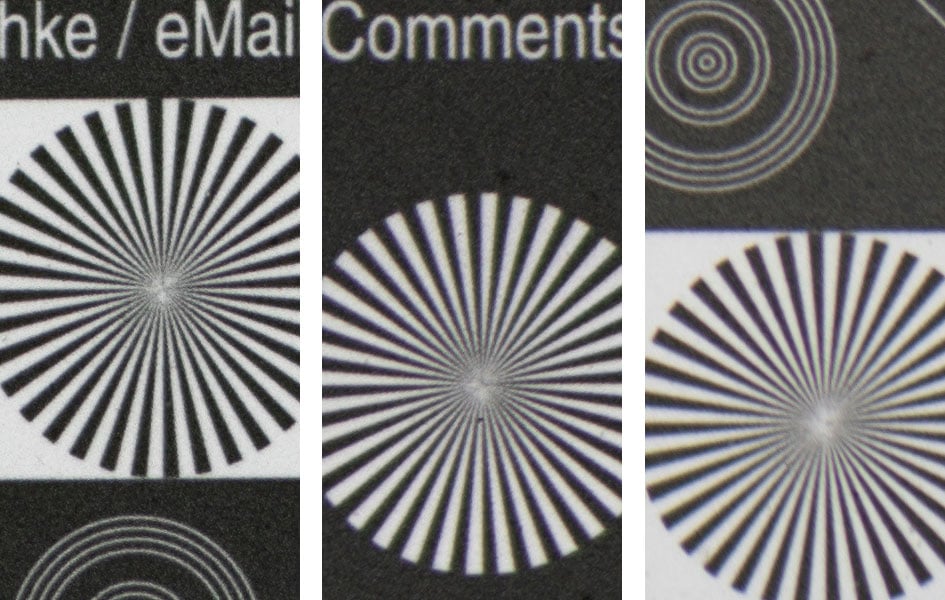
Above: Sony FE 90mm f2.8 Macro G OSS at f2.8; 100% crops
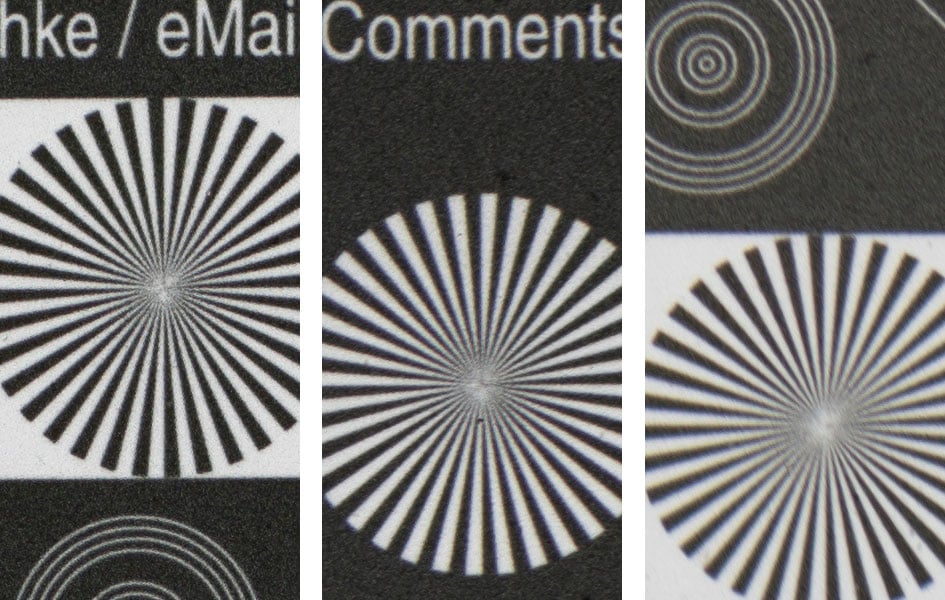
Above: Sony FE 90mm f2.8 Macro G OSS at f4.0; 100% crops
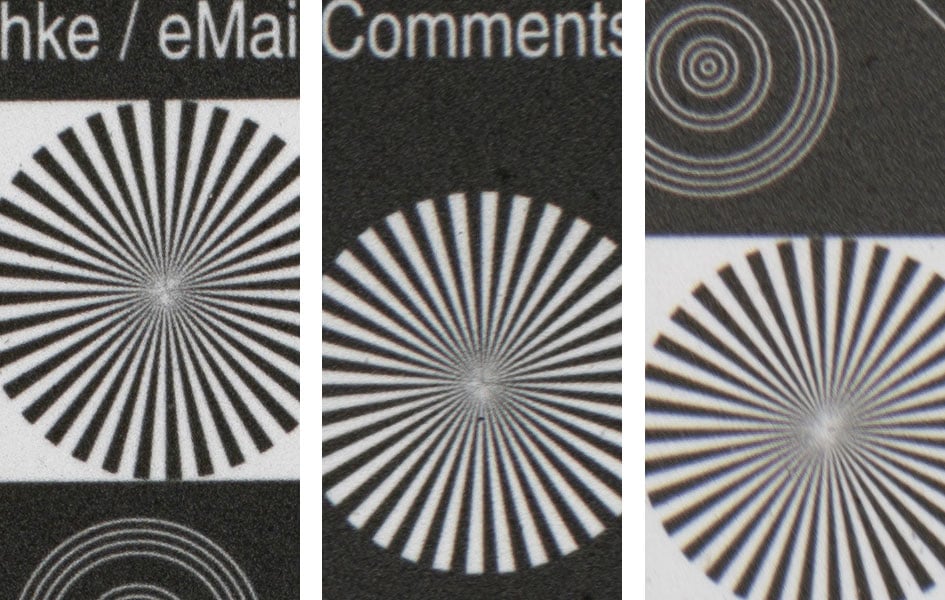
Above: Sony FE 90mm f2.8 Macro G OSS at f5.6; 100% crops
At maximum magnification the Sony is a bit soft at f2.8 although it still out-resolves the target. Stopping down to f4.0 improves acuity in the APS-C image circle visibly but still leaves the FF-corner wanting. The Sigma 105mm f2.8 DG DN Macro Art is clearly better at 1:1 magnification.
The test again showed the Sony to have practically no field-curvature even at 1:1 magnification: all crops in a row are from the same shot.
Flare, ghosting, and sun-stars
Catching a strong light-source shining directly into the lens is always a risky business: it could produce strange colorful ghost-images or reduce contrast considerably through flare and glare. The appearance of flare and ghosting depends on factors like the aperture and the angle of the light hitting the lens. So to judge the proclivity of Sony’s FE 90mm f2.8 Macro G OSS for these artifacts I went through a series of well calculated shots against a strong light source to provoke glare and ghosting. The lens hood was mounted in all shots. Following are three of the more extreme example results. The little bright square inset in the upper left shows the respective area with an exposure compensation of +3 EV to make it easier to see which levels of black the lens renders at that point:
Above: Glare and ghosting. Strong light hitting the Sony FE 90mm f2.8 Macro G OSS at f11; click image for 4k version or here for +3 EV exposure compensation
Above: Glare and ghosting. Strong light hitting the Sony FE 90mm f2.8 Macro G OSS at f11; click image for 4k version or here for +3 EV exposure compensation
Above: Flare and ghosting. Strong light hitting the Sony FE 90mm f2.8 Macro G OSS at f11; click image for 4k version or here for +3 EV exposure compensation
The Sony FE 90mm f2.8 Macro G OSS produces quite some ghosting artifacts and overall contrast is reduced through veiling glare. The typical streak occurring when the light is just outside the corner is pretty strong and also shows up over a broader range of angles than with many other lenses I tested.
To produce well defined sunstars the lens needs to be stopped down to f8.0 or below:

Above: Sunstars from the Sony FE 90mm f2.8 Macro G OSS at f5.6 (left), f8.0 (right), 100% crops
Next check out my sample images!
Check prices on the Sony FE 90mm f2.8 Macro at Amazon, B&H, Adorama, Wex or Calumet.de. Alternatively get yourself a copy of my In Camera book or treat me to a coffee! Thanks!
